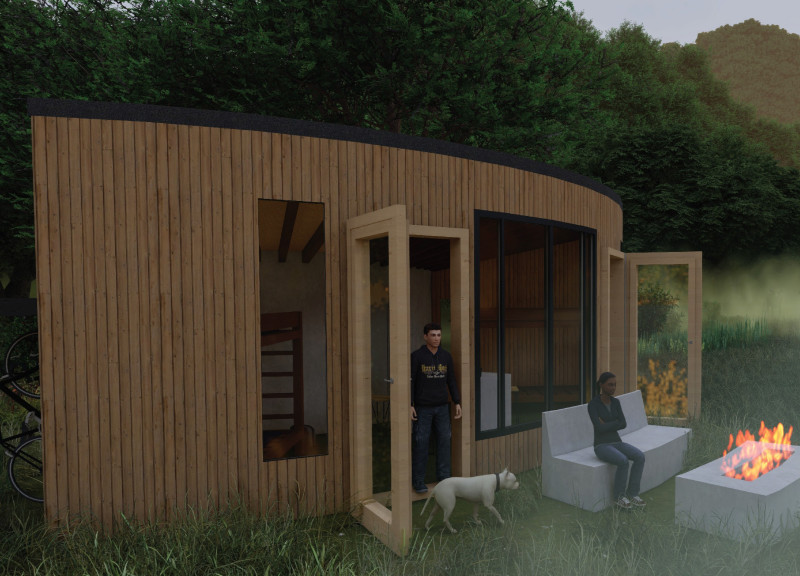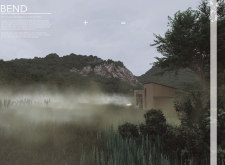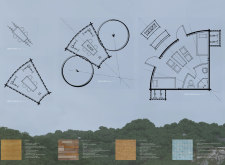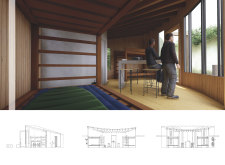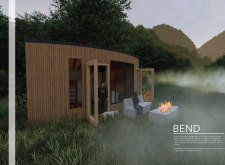5 key facts about this project
Unique Design Approaches
BEND distinguishes itself through its specific architectural strategies. The design employs fluid, organic forms that reflect the contours of the adjacent landscape, creating a cohesive relationship between the built and natural environments. The structure utilizes a mix of curved and geometric shapes, facilitating a visual and physical connection to the outdoor scenery. This approach not only enhances the aesthetic value but also contributes to a sense of shelter and comfort for users.
The project incorporates modular units, which can be adjusted for various communal activities, fostering social interaction among visitors. The inclusion of features such as an open dining area, shaded sections, and dedicated gathering spots incorporates multifunctionality into the design, allowing adaptability to different group sizes and uses.
Materiality is another significant aspect of BEND's innovative approach. The selection of sustainable materials, including bamboo, recycled wood, cork, and recycled glass, highlights a commitment to environmental responsibility. Bamboo is particularly notable for its strength and rapid renewability, while recycled wood emphasizes circular economy practices. Cork flooring provides practical benefits, such as slip resistance, which is essential for areas with high foot traffic. The choice of these materials enhances the project's overall sustainability while aligning with contemporary architectural trends.
Environmental Integration
BEND not only addresses user needs but also engages meaningfully with its surroundings. The extensive use of large windows allows ample natural light to penetrate the interiors, establishing a visual continuity with nature. Views of the lush landscape further enhance the user experience, promoting a sense of tranquility and connection to the external environment.
The structure prioritizes energy efficiency through careful design choices, including strategic placement of shading elements and the choice of insulating materials. These factors contribute to reduced energy consumption, aligning with sustainable architectural practices.
For those interested in exploring more about the architectural plans and sections of BEND, a detailed presentation is available that elaborates on its unique architectural designs and innovative ideas. Engaging with these materials will provide a comprehensive understanding of the project's nuances, highlighting its relevance in contemporary architecture focused on sustainability and community engagement.


